The 7 best pillows for neck pain to reduce aches and pains, no matter how you sleep
The best pillows for neck pain should guarantee a restful night with ultimate spine support for every sleeping style. Here are our tried and tested favourites
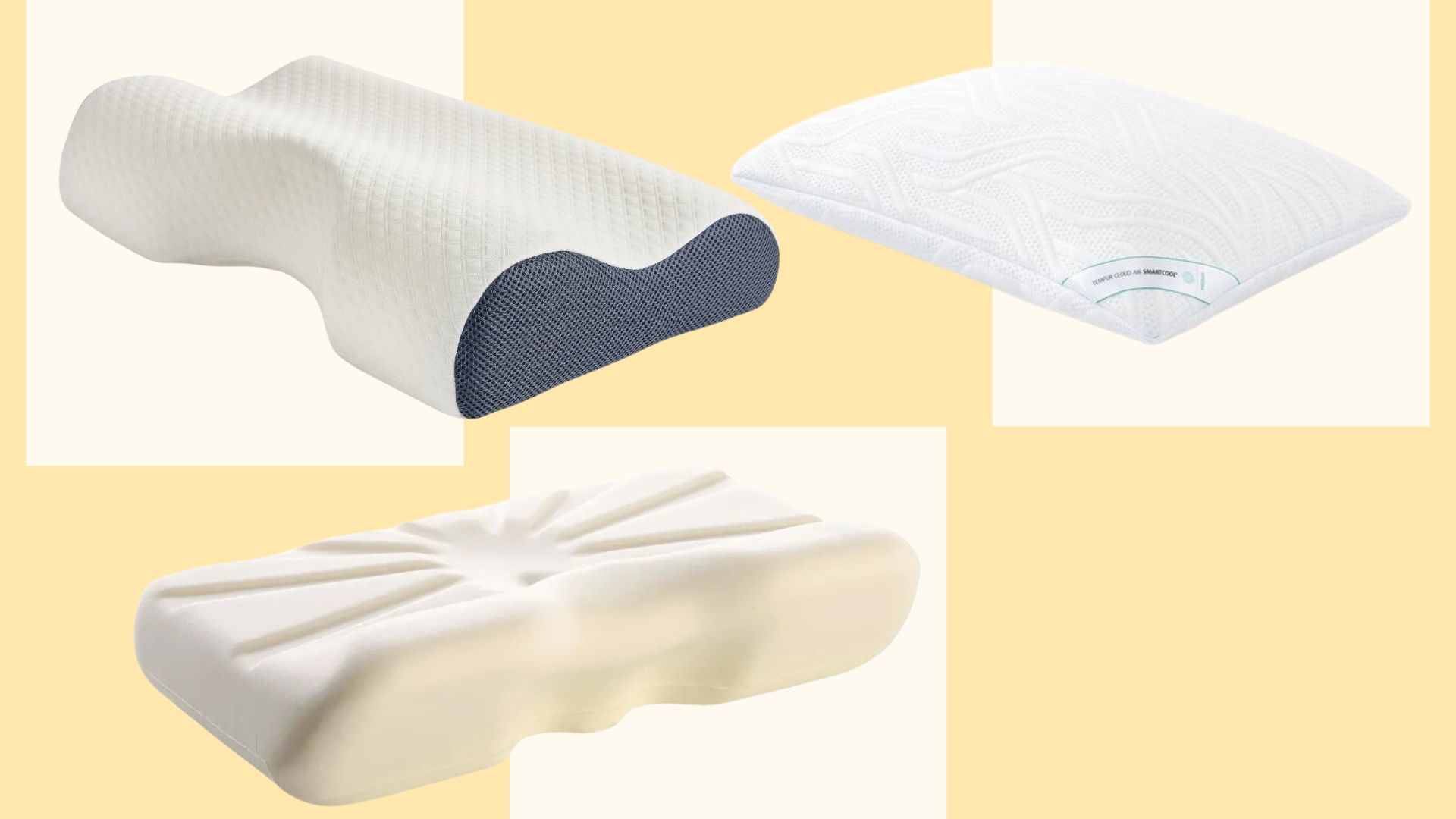
Grace Walsh
Having one of the best pillows for neck pain under your head can be the difference between a good night's sleep and an uncomfortable few hours if you suffer from neck aches and pains.
How your head rests controls how your spine rests, which is almost synonymous with how comfortable you'll feel going to sleep and waking up in the morning. If your pillow is too flat or soft, you'll likely need one of the best pillows that's a little more supportive.
But sleeping comfortably isn't as simple as replacing your old pillow with a brand-new one. Finding the right pillow for you depends on your specific needs and preferences. From how tall you are to which side you sleep on, it's worth researching before you buy a pillow that may not be the best fit.
To help you find the best pillow for neck pain, I've gathered pillows from popular and smaller wellbeing brands looking to make their mark on the sleep industry and put them to the test. We've assembled a team of expert testers to assess pillows based on how well they support spinal alignment and compared them for material, cost, how well they wash and, importantly, whether they reduced neck pain.
Best pillows for neck pain - the quick list

Best pillow for neck pain overall
While this specialist pillow has an unusual shape that may take a moment to get used to, it received one of the only two five-star reviews in our lineup. It blends comfort and support with a price tag under £100, ticking most boxes. Sleeping with this pillow is "like the feeling of a yoga stretch when you get it right", said our tester Laura.
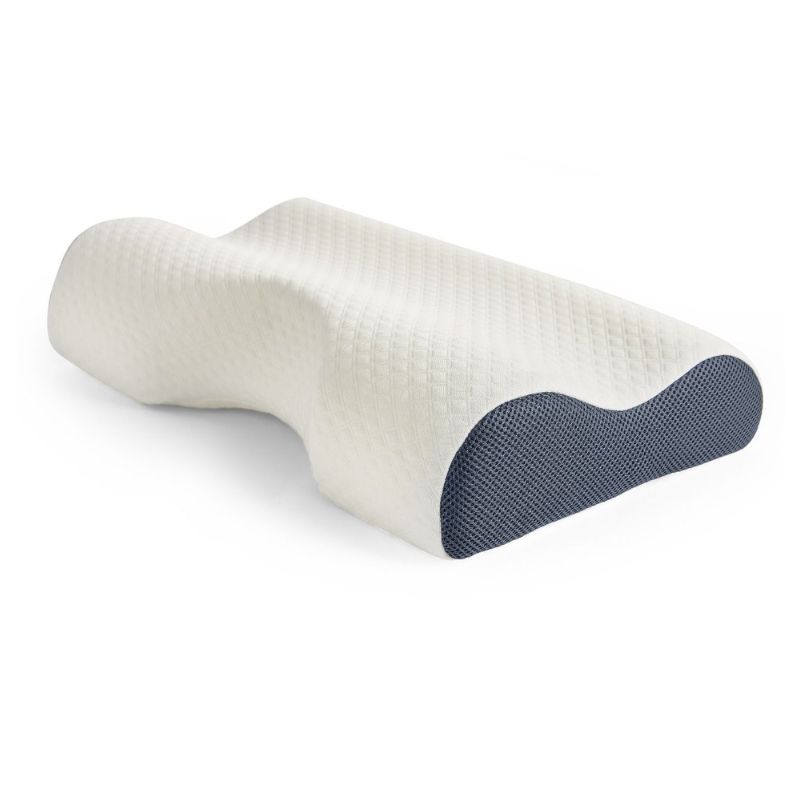
Best budget-friendly pillow for neck pain
The Silentnight’s ergonomic design supports your head at just the right angle to relieve neck and shoulder pain, and to align the airways for better breathing through the night. At half the price of our top pick with many excellent credentials to help soothe neck pain and align the spine, it's well worth a look.
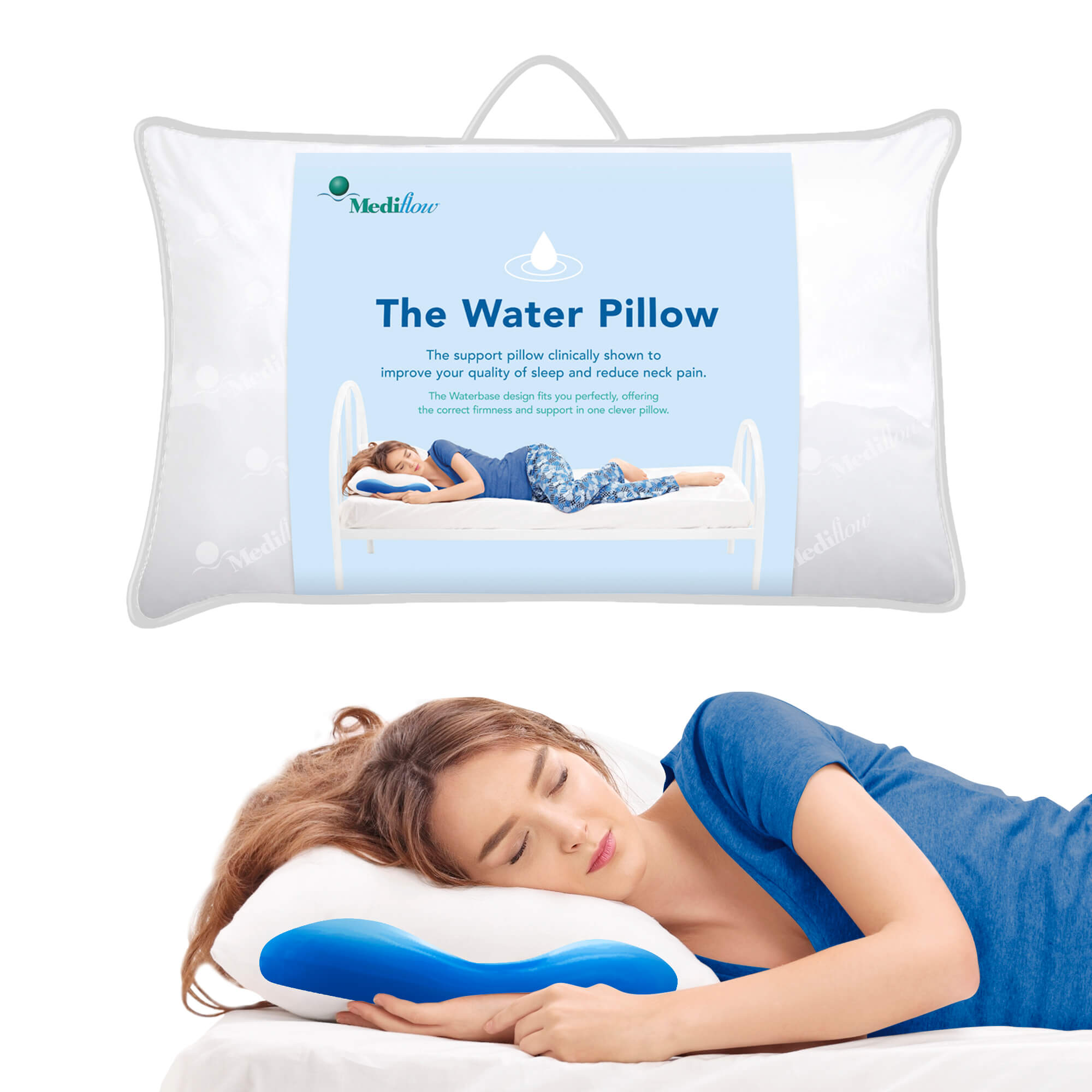
Best adjustable pillow for neck pain
When neck pain is such a personal issue, it makes sense to have a pillow that can be adjusted to suit you. The Mediflow Water pillow is filled with water rather than synthetic materials so you can do just that. It's a unique buy but if you've tried every other pillow out there and still can't find one that works for you, it may be the best buy.
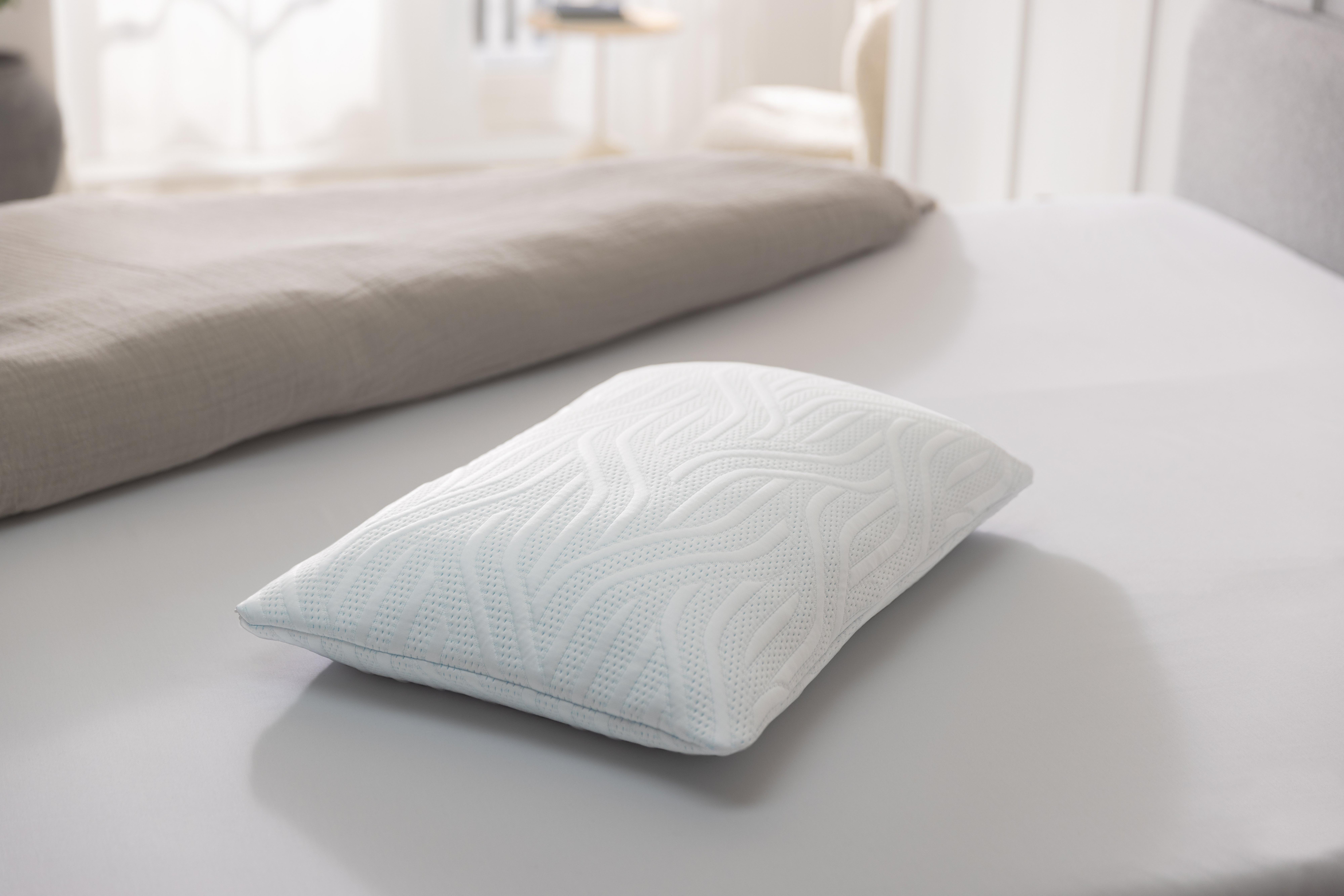
Best premium pillow for neck pain
With a premium price tag comes a premium product. The Dreams Tempur Cloud Air SmartCool Medium Pillow is made of soft and springy memory foam, so comfortable our tester described it as like "sleeping on a cloud". It has all the best qualities of other pillows, tucked away in a regular shape that won't look out of place on your bed.
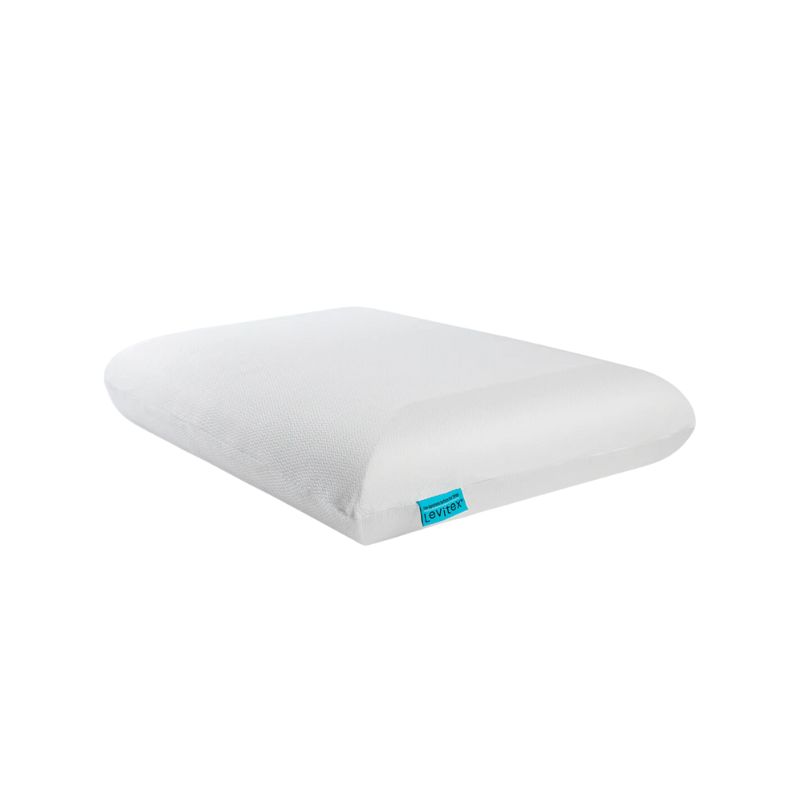
Best firm pillow for neck pain
If you already know you like a firm pillow to ease neck pain, the Levitex Sleep Posture Pillow is the top pick. This one scored an impressive 5 stars for its unique foam filling that feels soft under light pressure but firm when you lay down, it supports proper spine alignment from head to tailbone.
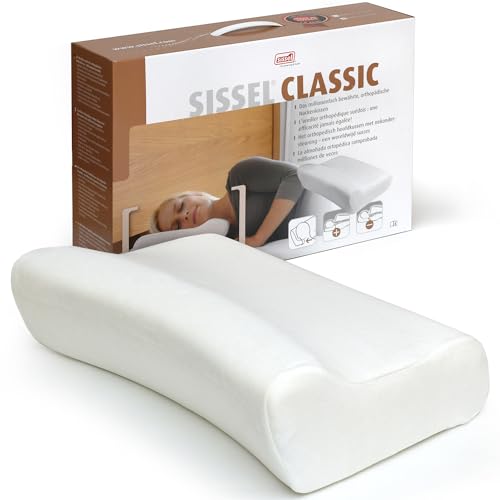
Best pillow for shoulder and neck pain
If you suffer from shoulder and neck pain, a pillow that creates a space between your neck and head while you sleep may be the better option for you. While this pillow looks a bit different, it gets the job done, allowing your neck muscles to relax as you do.
The best pillows for neck pain, reviewed by us
Best pillow for neck pain overall
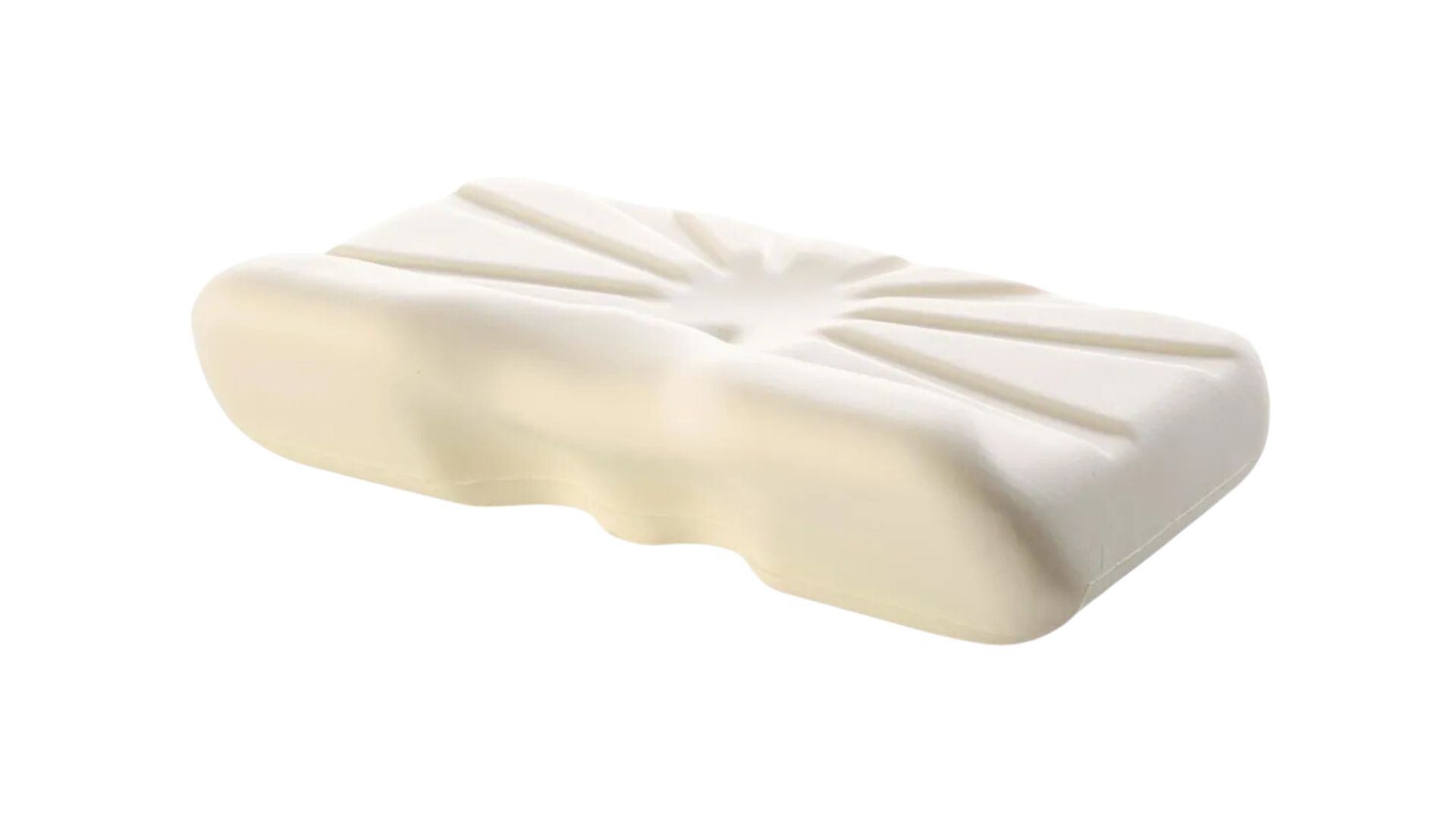
Specifications
Reasons to buy
Reasons to avoid
The Back in Action Memory Foam Pillow ticked all the boxes. It's comfortable, supportive, and doesn't look too out of place on the bed even though it has a different shape to a standard pillow. It also comes in three sizes, each with a depth to suit various body types - and if you contact the company, they'll help you find the best one for you. It's the closest you'll come to a personalised pillow for your neck pain under £100 - and our testers wouldn't stop raving about it.
"It feels firm but you do sink into this pillow gradually and it moulded into the shape of my neck and head. While it is an unusual shape sitting on the bed, this and the pillow's firmness weren't an issue like I thought they would be. I could spin over onto my side and shift about, while still feeling supported," says our tester Laura.
"The design kept my head up slightly higher than other pillows and much like the feeling of a yoga stretch when you get it right, I could tell this pillow was doing its job right. I've fallen in love with it and now I don't want to sleep on anything else."
However, there are two downsides to this otherwise excellent pillow. Firstly, there's no trial period to use the pillow and see if it's for you before properly committing. While that's not too unusual in this section, at £89 per pillow, it's more of a risk here. Also, it's a wipe-clean pillow so you can't put it in the washing machine, unlike most other pillows on this list.
See our full Back in Action Memory Foam Pillow review
Best budget friendly pillow for neck pain
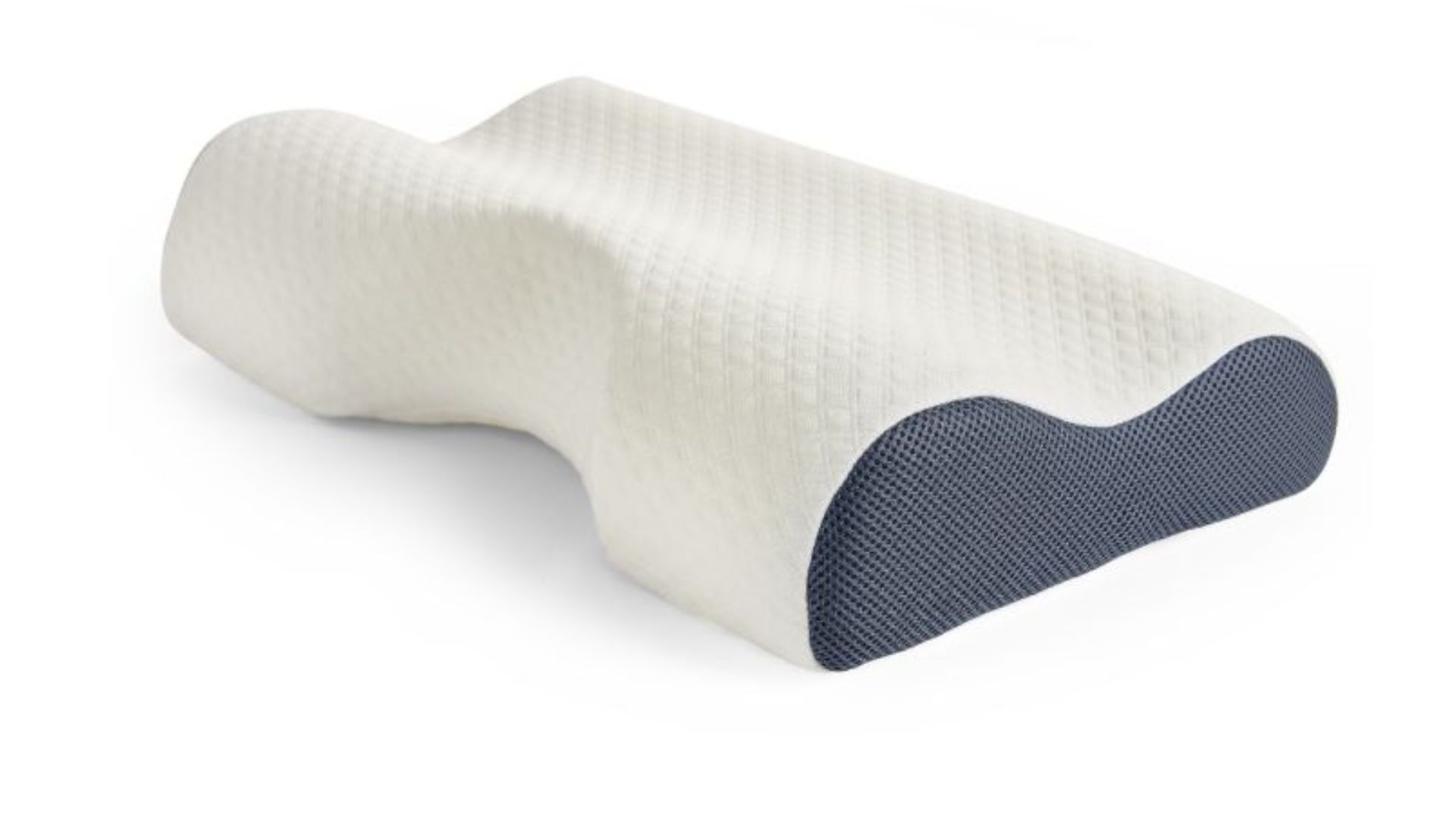
Specifications
Reasons to buy
Reasons to avoid
If you're looking for one of the best pillows for neck pain under £50, we have you covered with the Silentnight Sleep Therapy Contour Pillow. This ergonomic design is very supportive, lifting the head and neck from the bed to better align the spine, whether you sleep on your side or your back, but the sink-in memory foam allows for a comfortable night's sleep without too much firmness.
It's worth noting though that this pillow is a little smaller (48cm wide vs 75cm, the UK standard) than others. While it put our tester Caramel Quin off the pillow, our tester Laura liked the smaller size as it meant she could sleep further up the bed. Being smaller means you'll have a little extra space in your pillow case unless you buy a specialist one to go with your pillow.
"Having tested the Back in Action Memory Foam pillow, I would say this one from Silentnight has similar qualities - but it's almost half the price. It's very comfortable and, surprisingly, I like the smaller size as it allows me to sleep further up the bed," says tester Laura.
Read our full Silentnight Sleep Therapy Contonour Pillow review here
Best adjustable pillow for neck pain
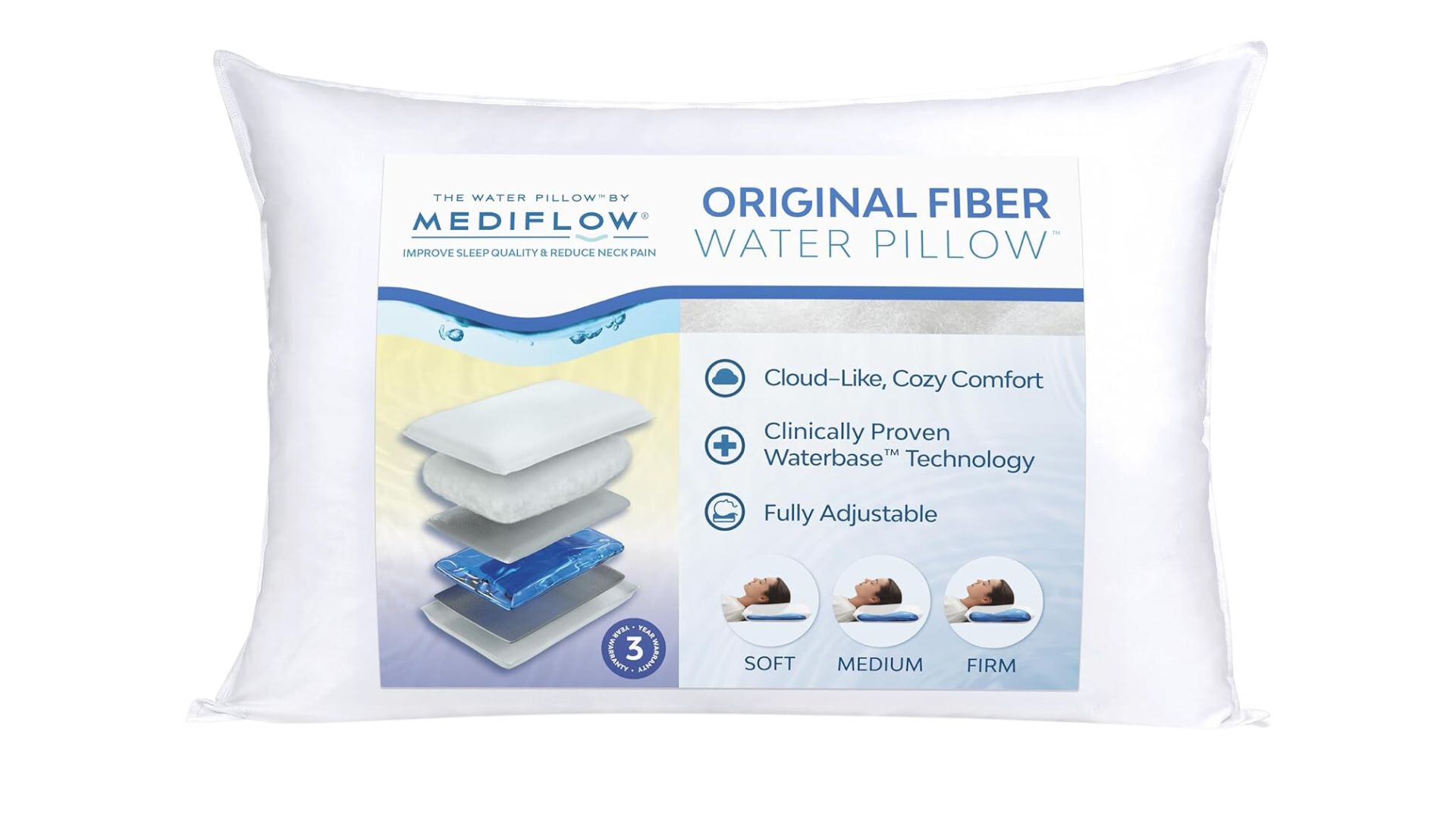
Specifications
Reasons to buy
Reasons to avoid
The Mediflow Water Pillow is the best pillow for neck pain to try if you've exhausted all your options and can't seem to find one that works for you. This uniquely designed pillow has a fibre filling with a water layer that can be filled to suit your support needs. It's fully adjustable.
"I didn't have a water-filled pillow on my bingo card when I took on the task of testing pillows for woman&home. This 1970s-style bedmate was definitely the most unique of the bunch but I was very pleasantly surprised after adjusting the pillow to suit my preferred firmness," says tester Caramel Quin.
"Laying my head on this felt good. It's a big pillow, unlike the Silentnight Sleep Therapy Contour Pillow, but it felt soft beneath me and though it was loud and swishy when I picked it up and moved it, it wasn't like that when I was lying on it. Plus, I didn’t feel like it might leak."
Read our Mediflow Water Pillow review here
Best firm pillow for neck pain
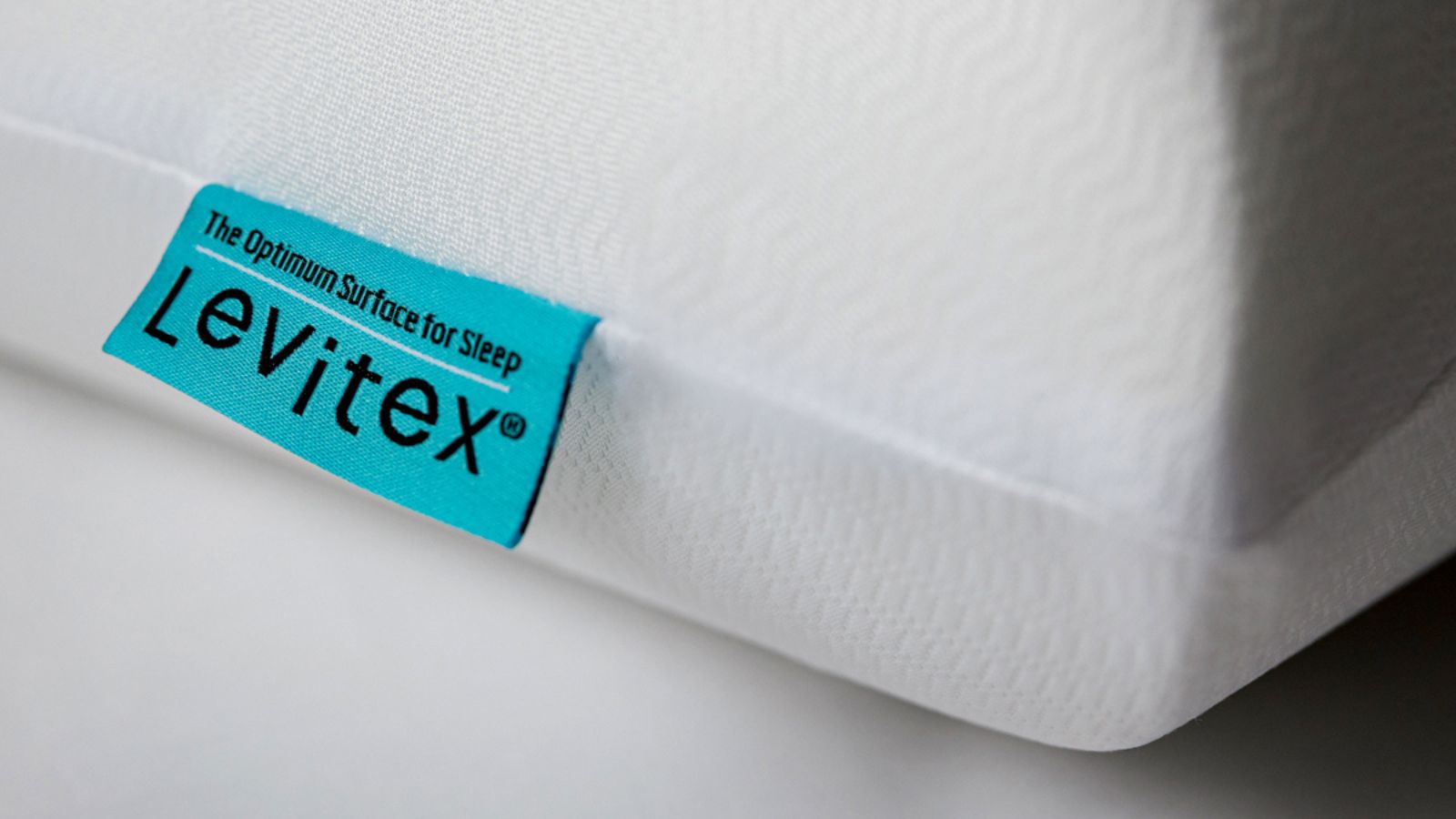
Specifications
Reasons to buy
Reasons to avoid
No matter whether you prefer to sleep on your back, side, or stomach, the Levitex Sleep Posture Pillow is designed with you in mind. Rather than focusing on filling, the brand prioritises firmness and size to meet the needs of whoever is sleeping on the pillow, with four different sizes to make sure all sleepers are supported.
Even fellow tester Lucy, who isn't normally a fan of memory foam pillows, was won over by the Levitex Sleep Posture pillow in the end. "It was so much comfier than I expected it would be and the firmness was so supportive around my head and neck. My head also didn’t slump off this one like it did with my old pillow, so overall I felt better."
The pillow is made from Levitex foam, specially designed to offer comfort and support in this way. However, I'd recommend leaving it out to air before putting it on your bed as it did come with a slightly off smell, which is to be expected from some foam pillows. It's also quite firm compared to others, so we wouldn't recommend it to those who would prefer a feather or down feeling.
Read our full Levitex Sleep Posture pillow review
Best premium pillow for neck pain
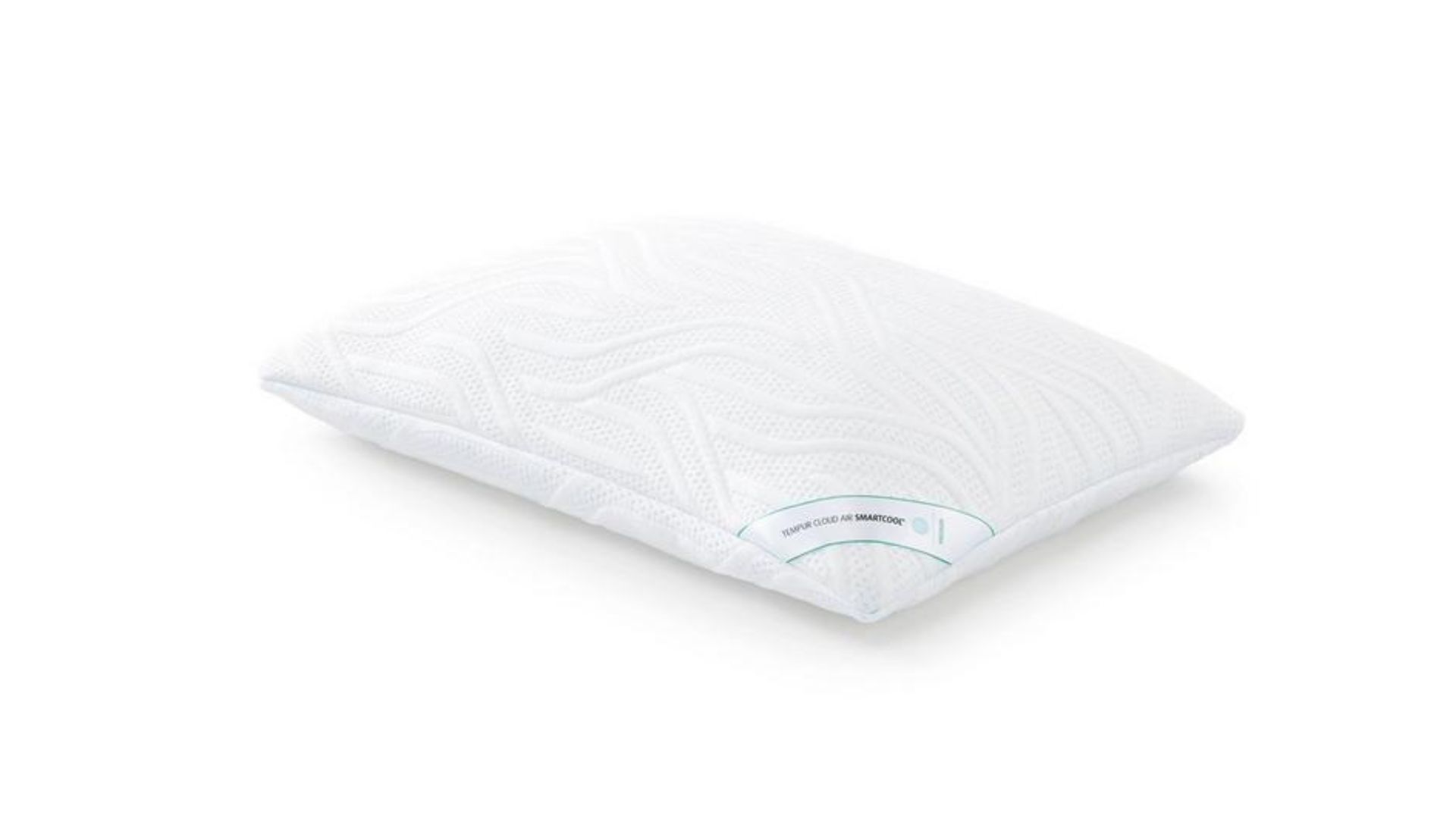
Specifications
Reasons to buy
Reasons to avoid
The Dreams Tempur Cloud Air SmartCool Medium Pillow is one of our few favourite pillows for neck pain that is not ergonomically shaped, so it looks just like a normal pillow. Tester Caramel Quin tested the medium-firm option but there's also a soft version.
"I loved how normal this pillow looked compared to the other options I've tested. It has a wonderful 'Goldilocks' feel - not too soft like a down or hollow fibre pillow but not firm like traditional memory foam either. It's just right. I instantly wanted to drift off to sleep when I put my head down on it for the first time," says tester Caramel.
As well as being one of the best pillows for neck pain, the breathable cover on this pillow means it's also one of the best cooling pillows, perfect for warmer weather or those dealing with night sweats.
Fellow tester Saira agreed it was one of the best. “It moulded to my head easily," she said. "Being slightly firmer than the others, I felt I had something under my head to rest on.”
While spending almost £150 on a pillow means you're dishing out almost three times the amount of money as one of the other, more budget-friendly pillows on this list, the premium materials and supremely comfortable design make it a worthy investment if your budget can stretch.
Read our full Dreams Tempur Cloud Air SmartCool Medium Pillow review
Best pillow for shoulder and neck pain

6. Sissel Classic Orthopaedic Pillow
Our expert review:
Specifications
Reasons to buy
Reasons to avoid
If you experience neck and shoulder pain, it's important to have a pillow that can support your sleep through both. Having created cervical spine support pillows for more than 30 years, expert brand Sissel knows what they're doing with specialist pillows.
While it may not look the comfiest, this orthopaedic foam pillow is designed to sit snugly in the space between the neck and shoulders, working to effectively reduce any aches and pains at the nape of the neck with supreme support. Our tester Louise found it helped her muscles relax through the night and aligned with the rest of her body, supporting both neck and shoulders.
Given its shape, it's not suitable for font sleepers and hardly the most aesthetically pleasing pillow on our list - even with a cover on it. In fact, we suggest you swap it out for a cheaper decorative pillow when you're not sleeping.
Best soft pillow for neck pain
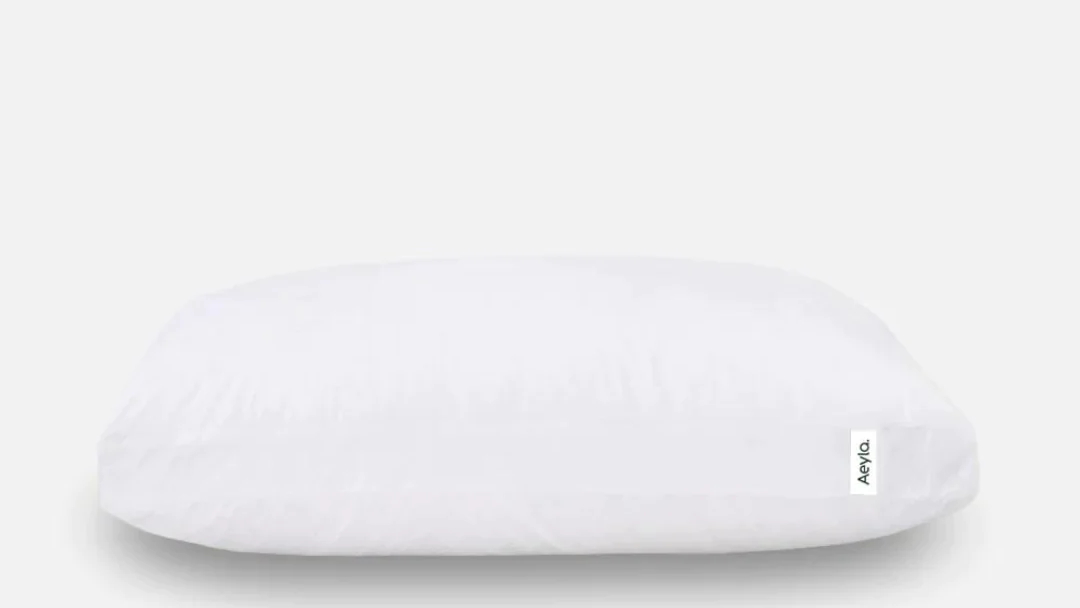
7. Aeyla Dual Pillow
Our expert review:
Specifications
Reasons to buy
Reasons to avoid
The most unique aspect of The Aeyla Dual pillow is its pillow-in-pillow design, providing a comfy blend of squish and support. This pillow comes recommended by osteopath Anisha Joshi, of OsteoAllies, who praises its support for the neck. "The best pillows for neck pain are the Aeyla Dual Pillows, which support your neck whilst also allowing movement," she told w&h. "It's important to look for a pillow that allows you change sleep positions during the night and still be supported, because whilst we all have a certain sleep style, we all toss and turn.
That being said, it is relatively soft compared to most pillows for neck pain. The dual design allows for extra plushness. Upon test, we found two pillows were needed to gain enough height, and it did flatten throughout the night.
How to choose the best pillow for neck pain
The best pillows for neck pain are not a one-size-fits-all solution. "There are many different types of pillow and no one pillow will suit everyone. Some of the most common is what I call the “bog standard”. These are your cheap, comfy, cotton pillows that often come in a two-pack and usually cost about £7.50 each. I love these pillows, they are often hypoallergenic so they’re good if you are a bit sensitive," says Allardyce, also the group clinical director for Surrey Physio.
"Memory foam is also common, but some people find them too firm. However, the head will sink into the memory foam more than the neck area, providing good support for the neck. They often come with a curve on one edge for extra support, but sometimes they suit people, and sometimes they don’t. The only way to know if it will feel comfortable for your neck is to try it," he says.
Many pillows offer a trial period or warranty should the pillow not suit your needs. If you've had problems buying pillows for neck pain, opt for a pillow that offers one of these guarantees.
What to consider when buying a pillow for neck pain
- Your sleeping position: Neck pain could be caused by the way you sleep and what you're sleeping on - and a pillow isn't going to solve this problem. "Sleeping on your side tends to suit the neck well, and it's easy to give the neck plenty of support. Sleeping on your front tends to be the worst position, as you are forced to rotate your neck significantly to one side or the other," says Allardyce.
- Pillow size: If your pillow is too big your head will be propped up, too small and you won't have enough support. A pillow at the right height will keep your neck, spine and shoulders aligned as you lie down.
- Mattress: Some mattresses are firmer than others, so choose a pillow that matches and offers the right support, advises osteopath Caroline Baker. "A softer mattress could benefit from being paired with a firmer pillow. However, if you use this same pillow with a super firm mattress, you could be met with a loftier combination that will do your neck and spine alignment no favours."
- Material: A study published in the International Journal of Environmental Research and Public Health shows pillows made from latex or memory foam offer the best neck and shoulder support. Baker also advises taking note of the label on pillows you've loved at family and friends' houses, or hotels, for inspiration on the type of material and firmness you like best.
Is a high or a low pillow better for neck pain?
According to chiropractor Dr Xandra Middleton, both can present a problem for neck pain as we're striving for a neutral alignment. "Both high and low pillows can be an issue. Both push the neck into an unnatural position, which can create tension in the neck," she told w&h.
"The ideal is neutral, which means you preserve the natural curve of the neck when sleeping on your back and a straight spine if lying on your side."
If you're suffering from lower back pain instead, our expert guide to the best pillows for back pain is key to getting a great night's sleep.
What's the best filling for pillows for neck pain?
The most popular pillows for neck pain are usually filled with memory foam (standard and memory), latex, buckwheat, or feathers. These materials offer the best balance of support and pressure relief. However, Dr Middleton says one of the most popular fillings is memory foam, which won't be right for everyone.
"I find that some of my patients dislike the hard feeling of memory foam and, if you get warm at night, memory foam in a pillow can make this worse. I like a supportive-but-light foam for my patients to give them both support and comfort," she says.
However, memory foam is still a good choice for combating neck pain. "Memory foam can be too firm and 'unforgiving' for some people, but it comes in different densities so don't be afraid to 'try' pillows just as you would a mattress," says Dr Stefaan Vossen, a chiropractor at Core Clinics.
"Non-memory foam which still has enough density to offer support is probably best for most neck pain sufferers because it moulds to your face, head and neck but still offers good support," he notes.
How can you prevent neck pain in future?
While investing in one of the best pillows for neck pain is a great start, there are other measures you can take to prevent neck pain in the future. "Address the underlying issue first of all," says Allardyce.
"If you are suffering with neck pain at night, there’s probably something driving it. Maintaining good neck mobility and keeping your neck strong are important factors to reduce neck pain at night. Also, try your best throughout the day to maintain good posture. That means reducing forward neck bending from regular phone or laptop use."
Sign up to our free daily email for the latest royal and entertainment news, interesting opinion, expert advice on styling and beauty trends, and no-nonsense guides to the health and wellness questions you want answered.

Louise is a contributing writer at Woman and Home. With experience in homes ecommerce, Louise worked in PR and communications before joining Future in April 2022. She now writes across Real Homes, Ideal Homes, Livingetc, and Homes and Gardens.
Bringing bags of bedding expertise from her time working for luxury bedding and homeware brands, Louise specializes in sleep content, so you can wind down well. But aside from helping readers get essential shut-eye, she also writes various content across home decor and shopping trends, from buying guides and reviews to features and news.
- Grace WalshHealth Channel Editor

